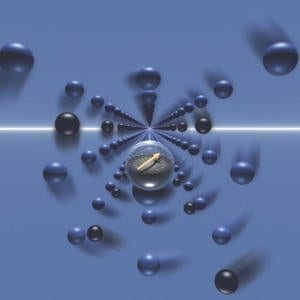
These engines would have no moving parts, would not wear out, and would be infinitely reliable
Researchers who are studying a new magnetic effect that converts heat to electricity have discovered how to amplify it a thousand times over — a first step in making the technology more practical.
In the so-called spin Seebeck effect, the spin of electrons creates a current in magnetic materials, which is detected as a voltage in an adjacent metal. Ohio State University researchers have figured out how to create a similar effect in a non-magnetic semiconductor while producing more electrical power.
They’ve named the amplified effect the “giant spin-Seebeck” effect, and the university will license patent-pending variations of the technology.
The resulting voltages are admittedly tiny, but in this week’s issue of the journal Nature, the researchers report boosting the amount of voltage produced per degree of temperature change inside the semiconductor from a few microvolts to a few millivolts — a 1,000-fold increase in voltage, producing a 1-million-fold increase in power.
Joseph Heremans, Ohio Eminent Scholar in Nanotechnology, said that his team’s ultimate goal is a low-cost and efficient solid-state engine that coverts heat to electricity. These engines would have no moving parts, would not wear out, and would be infinitely reliable, he added.
via Science Daily
The Latest Streaming News: Thermoelectric Heat Engine updated minute-by-minute







